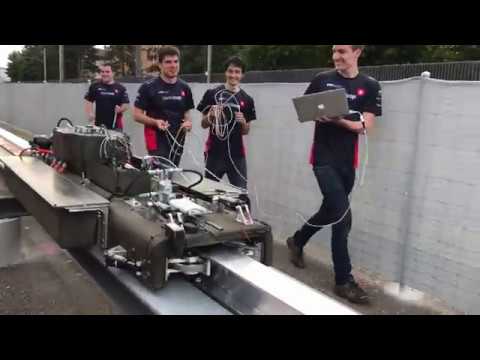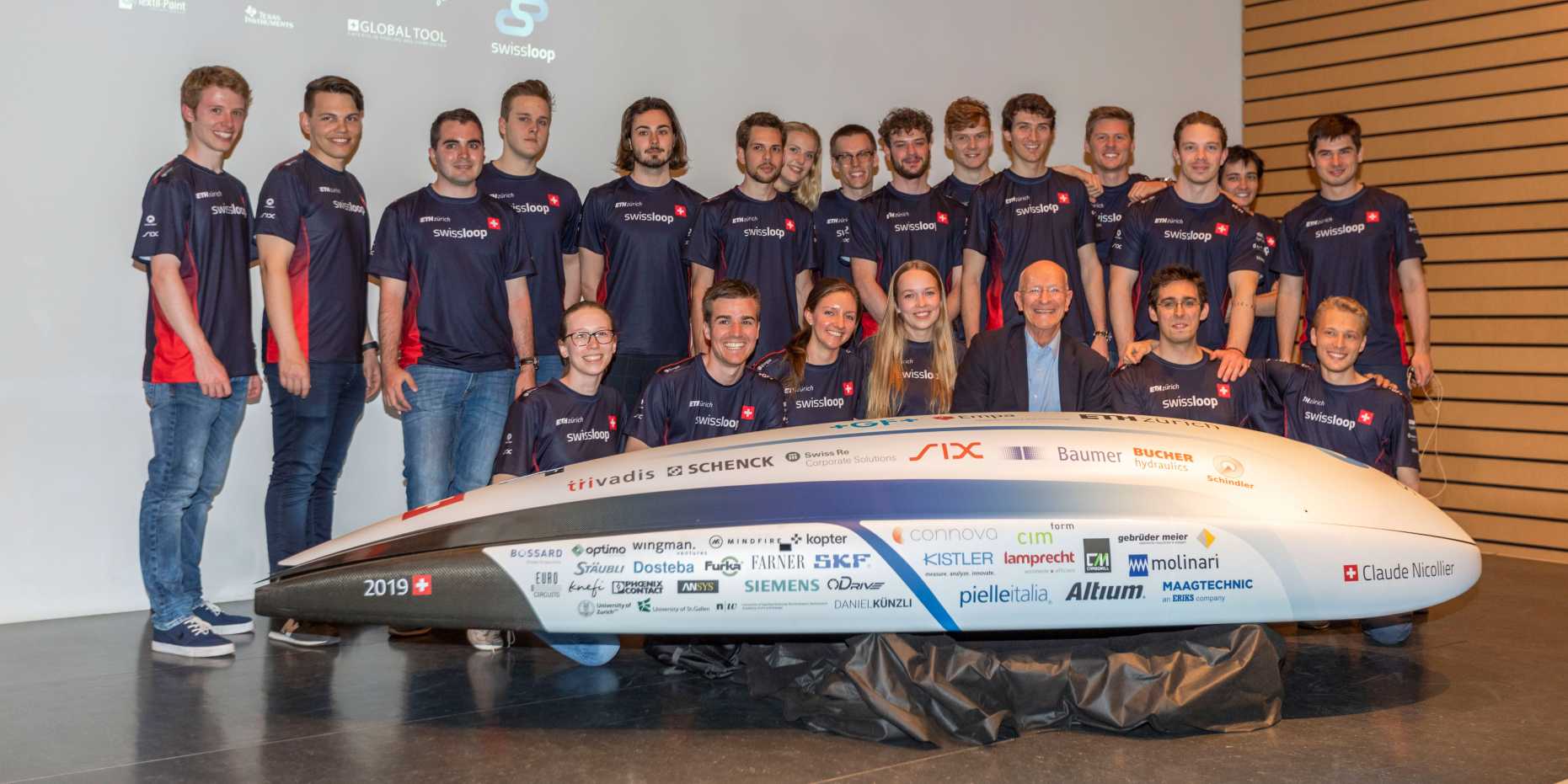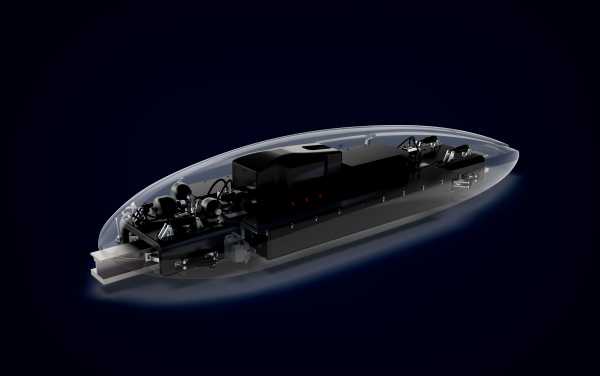Swissloop relies on "Claude Nicollier"
In July, Swissloop, an association of students from ETH Zurich and other Swiss universities, will once again be competing against teams from all over the world at the Hyperloop Pod Competition in Los Angeles. On June 12, the students presented their new pod to the public for the first time.
This summer will be the fourth time that SpaceX is hosting the Hyperloop Pod Competition. SpaceX founder Elon Musk is using the competition to encourage further development of transportation capsules for the Hyperloop. The Hyperloop is a transportation technology in which capsules – known as pods – containing cargo or people will one day be transported through vacuum tubes at speeds of up to 1,200 km/h.
Student teams from all over the world applied for the competition and 21 have been given the chance to present their prototype in Los Angeles in July. On July 21, the most promising pods will compete against each other on the 1.25 km long SpaceX test track. The fastest one wins – as long as it can brake without crashing. Swissloop, an association of students from ETH Zurich and other Swiss universities, is one of the invited teams. They are taking part in the competition for the third time.
More than 1,400 individual parts
In summer 2017, Swissloop competed with its first pod “Escher”, followed by its successor “Mujinga” in 2018. The team has once more developed an entirely new prototype for this year’s competition.
At 3.27 metres in length and weighing a good 220 kilogramm, “Claude Nicollier” consists of more than 1,400 individual parts, 147 of which were custom-made. In contrast to the cold gas drive of “Escher” and the electric motors of “Mujinga”, the new pod features a linear induction motor with a propulsive power of approximately 400 kilogramm. Although Musk already proposed this type of drive for the Hyperloop in a white paper in 2013, it is the first year in which this type of motor will be used in competition.
Two batteries provide the pod with energy, generating a total of more than 800 volts and 600 amps, which amounts to the power of about 600 microwave ovens. The pod was named after Claude Nicollier, the first and so far only Swiss astronaut. In 1992, Nicollier flew into space for the first time. In total, he has taken part in four space flights. As in previous years, the construction of the new pod was financed in large parts by industry sponsors.
Students develop linear induction motor
“We are proud to have developed our own linear motor,” says Daniel Kaufmann, lead engineer at Swissloop. The Swissloop team began researching the linear motor last year and had the opportunity to exhibit a first model during the competition in Los Angeles in 2018. This served as the basis for further developments this year. In a few weeks, the team will be heading back to Los Angeles. “We are very much looking forward to our time in LA,” says Stefan Kaspar, COO of Swissloop. “For us, it is a great opportunity to exchange ideas with other teams and measure ourselves against them.”
On June 12, the Swissloop team presented “Claude Nicollier” to the public for the first time at the Empa-Akademie in the presence of its namesake. The pod is now being prepared for transport to the US. For Swissloop, the next round of the competition will begin on July 14: the students will test their pod on the SpaceX site for a week in order to qualify for the final on July 21.




